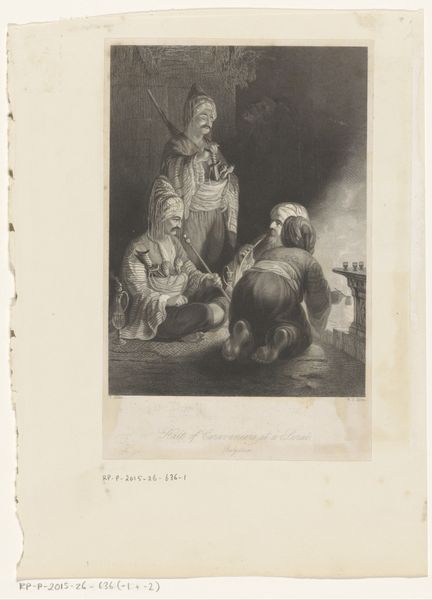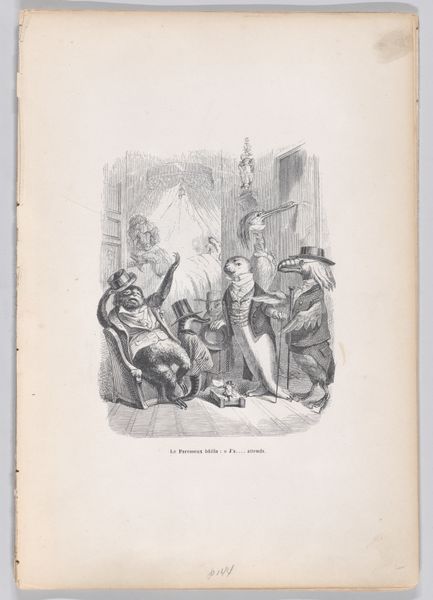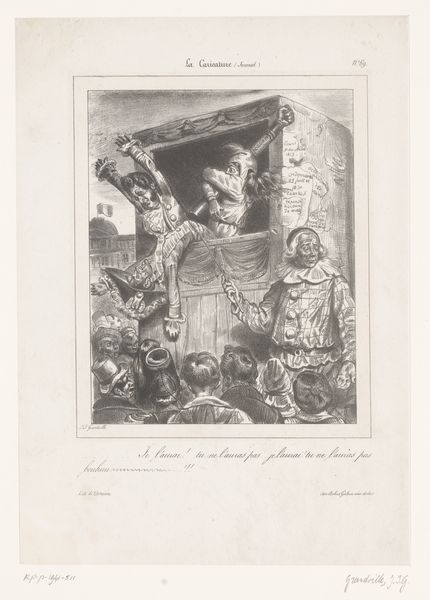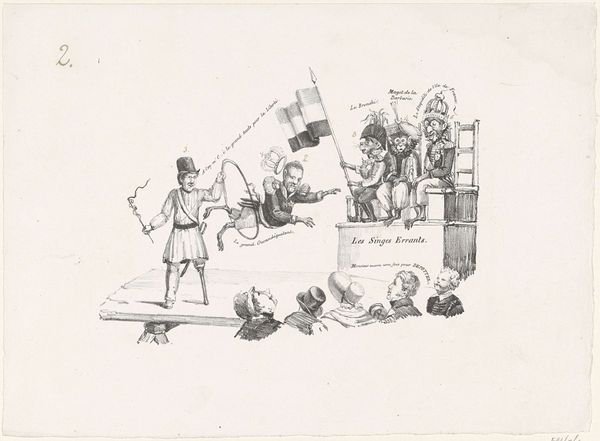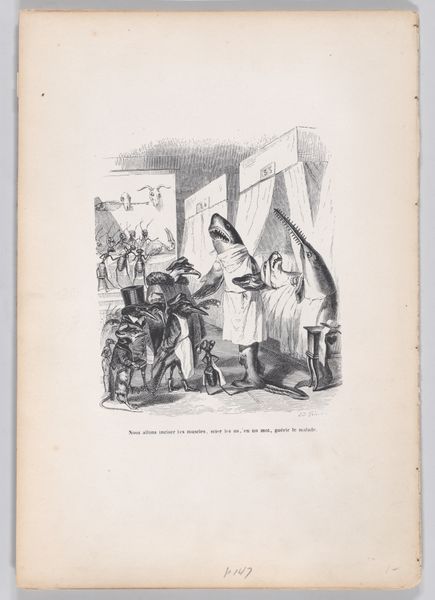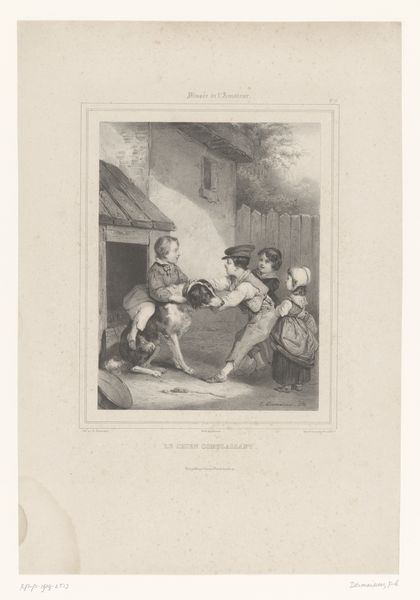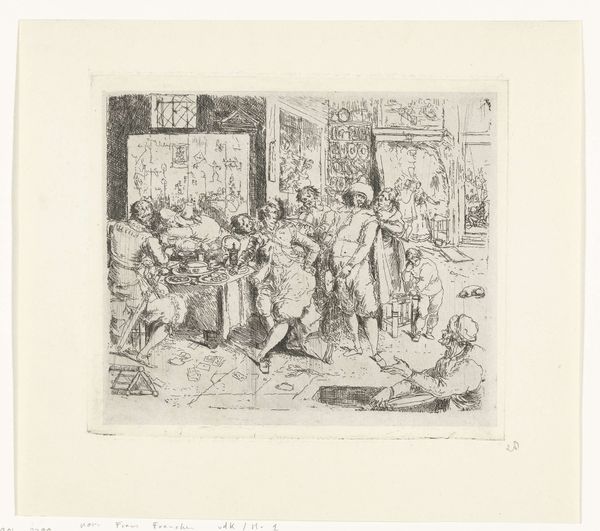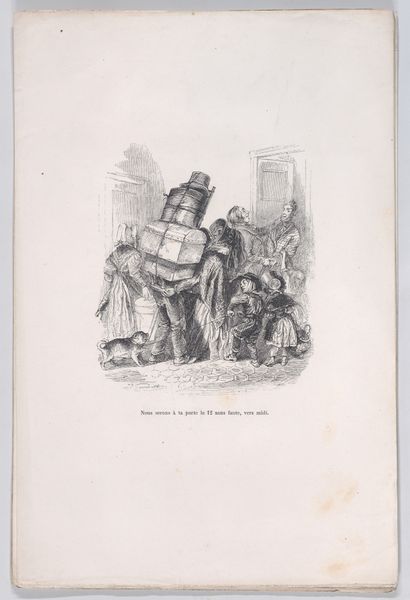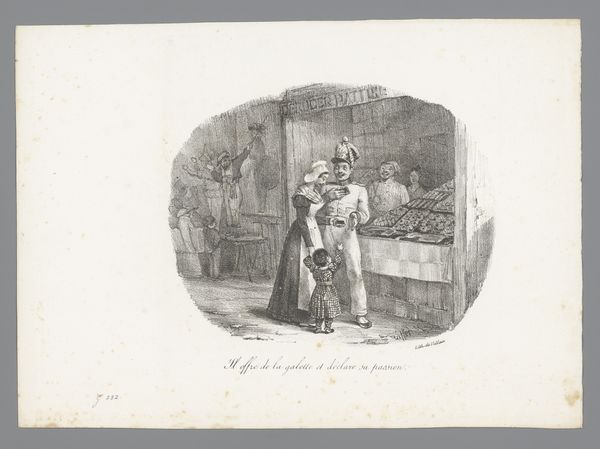
drawing, print, engraving
#
drawing
# print
#
old engraving style
#
romanticism
#
genre-painting
#
history-painting
#
engraving
Dimensions: height 274 mm, width 207 mm
Copyright: Rijks Museum: Open Domain
Editor: So this engraving, "Harlekijn kondigt poppenspeler aan op podium" by François Grenier, made around 1820, really strikes me as a slice of everyday life. It feels like stepping back in time. What stands out to you? Curator: Well, let's think about the printmaking process itself. Engraving allowed for relatively inexpensive reproduction and wide distribution. This wasn't 'high art' meant for a wealthy collector, but a more accessible commodity. Consider the labor involved – the skilled artisan meticulously carving the image into a metal plate. How does this democratization of imagery impact its meaning, its cultural function? Editor: That's interesting. I hadn’t considered the production aspect so closely. It's almost like a form of early mass media. How do the materials of printmaking impact the work's value in society? Curator: Precisely! Think about it – prints like this were consumed by a growing middle class. The subject matter, a street performance, reflects their entertainment and interests. But it’s also a representation, a *mediated* experience. Do you think viewing performances through prints like these changes how audiences understand real events? Editor: I can see that. By turning it into a print, the performance became something you could own and revisit. I guess I was mostly focused on what was being shown. It really calls into question what the essence of live performances were when reproducible visual depictions started to emerge. Curator: Exactly! And what do you think about the fact it's an announcement for a puppet show? Puppet shows are art imitating life, so isn't this print just more art imitating life? We see art in layers; how do each of the material layers – the physical performance, the puppetry, the engraving – inform one another, reflecting the cultural values of the time? Editor: I never thought of it like that. Now I am questioning the role and intention of reproducible material in how we interpret history and the arts! Thanks for enlightening me with your insight! Curator: It's a perspective that brings art closer to the people, literally. Examining the materials and their production demystifies the 'genius' of the artist and places art within a broader social context. Always a good starting point.
Comments
No comments
Be the first to comment and join the conversation on the ultimate creative platform.

